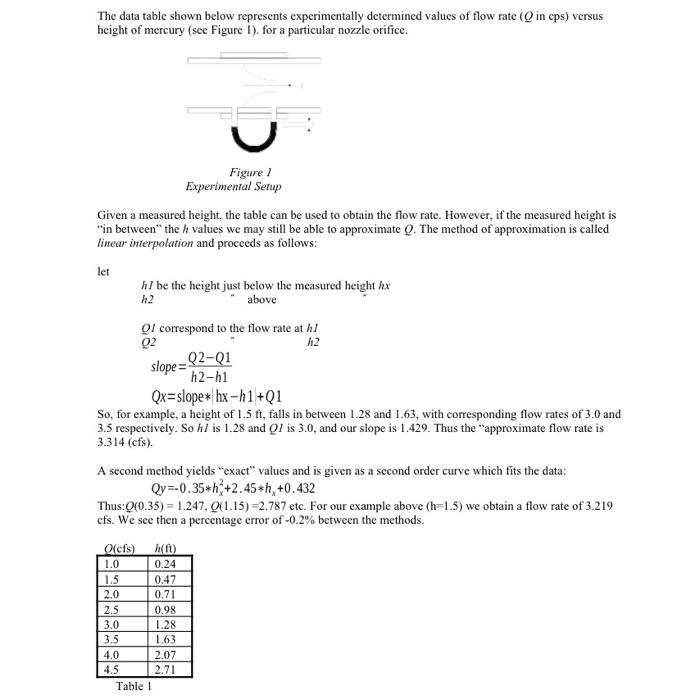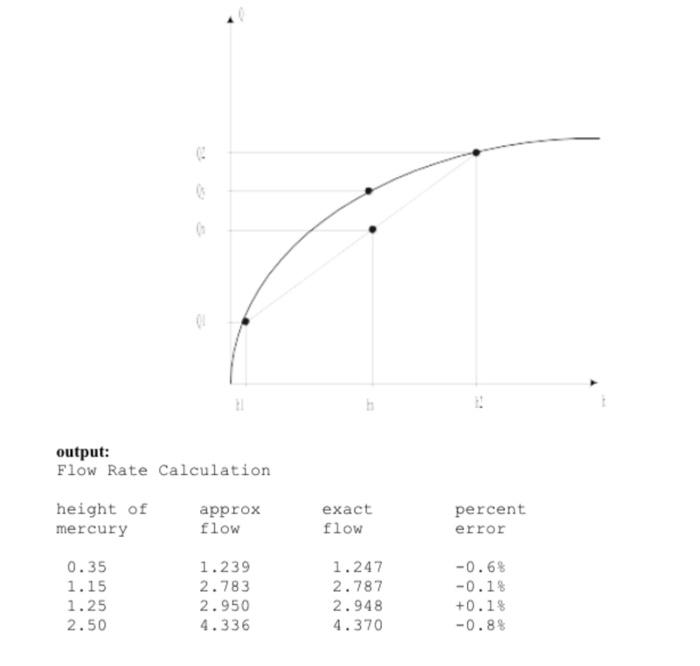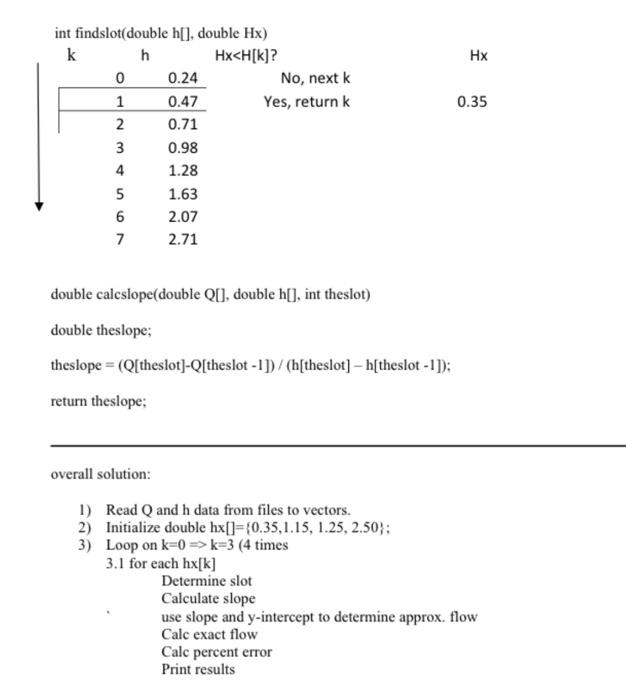Answered step by step
Verified Expert Solution
Question
1 Approved Answer
This program is to be written in C sharp help please. The assignment is to write a program to produce the output shown below. The
This program is to be written in C sharp help please.
The assignment is to write a program to produce the output shown below. The data for flow and height is to
be read from a file and stored in two one-dimensional arrays (called Q and h). The data for hx is to be stored in another one dimensional array and statically initialized.
You will need to write several functions.
-The first is a ,slot, function which determines the index of hx (the parameter to slot) i.e. the table entry where
hx fits between h1 and h2.
-The second function ,slope, returns the slope of the line (based upon the slot of
hx).
-The third function, sec_order, returns the exact value for hc.
-The fourth function,perror, computes the percent error between Qx and QY



Step by Step Solution
There are 3 Steps involved in it
Step: 1

Get Instant Access to Expert-Tailored Solutions
See step-by-step solutions with expert insights and AI powered tools for academic success
Step: 2

Step: 3

Ace Your Homework with AI
Get the answers you need in no time with our AI-driven, step-by-step assistance
Get Started


